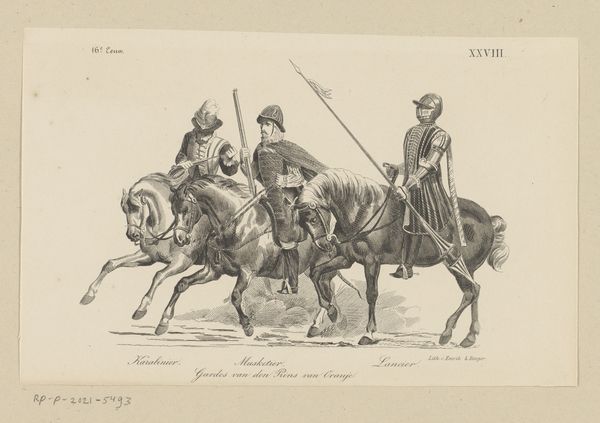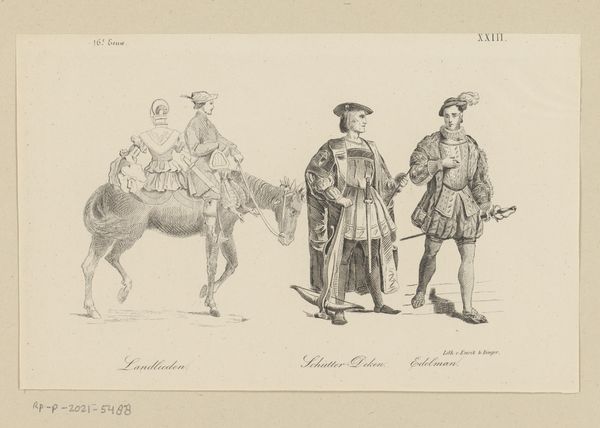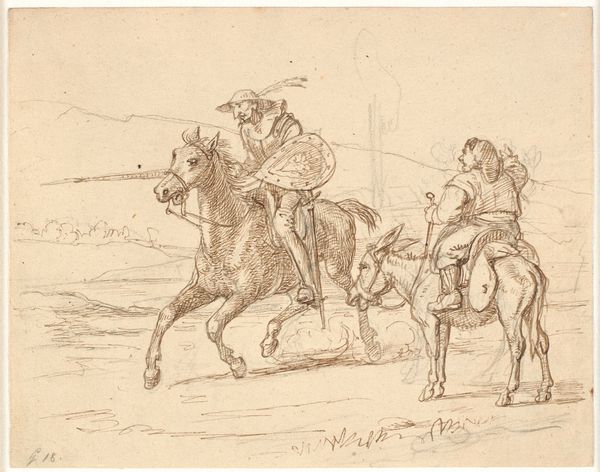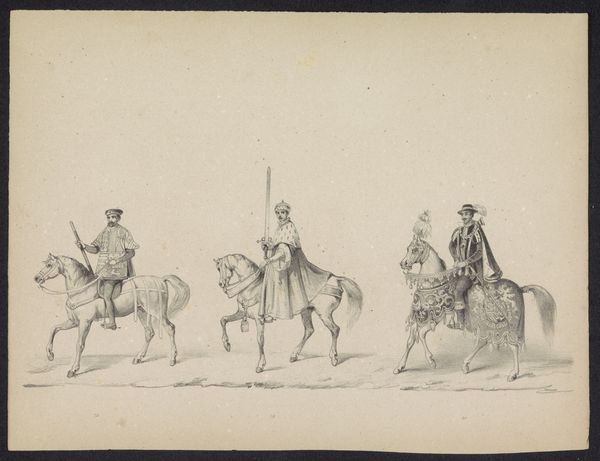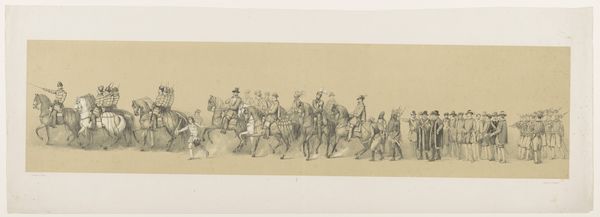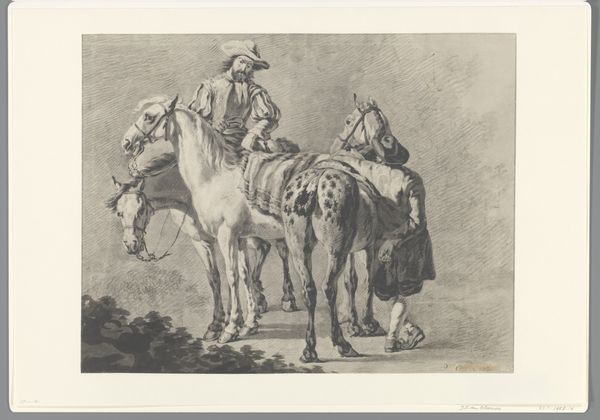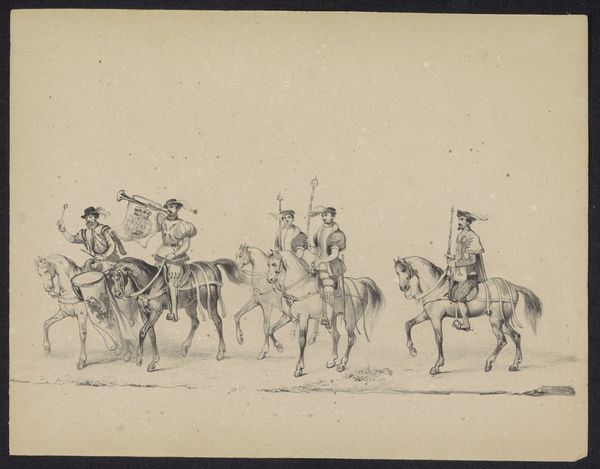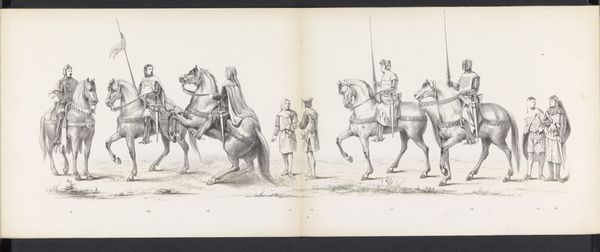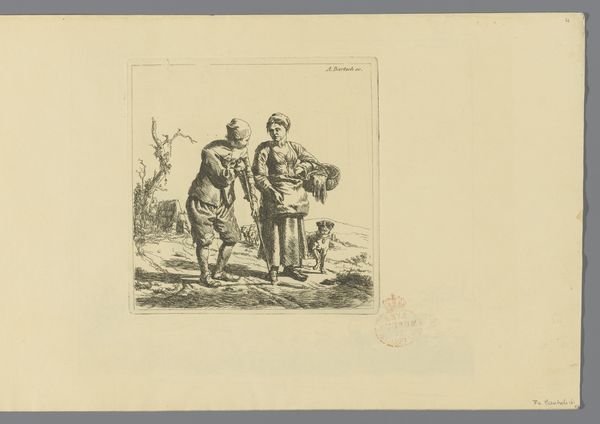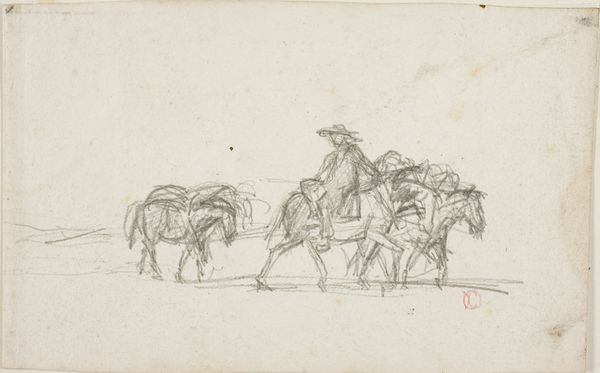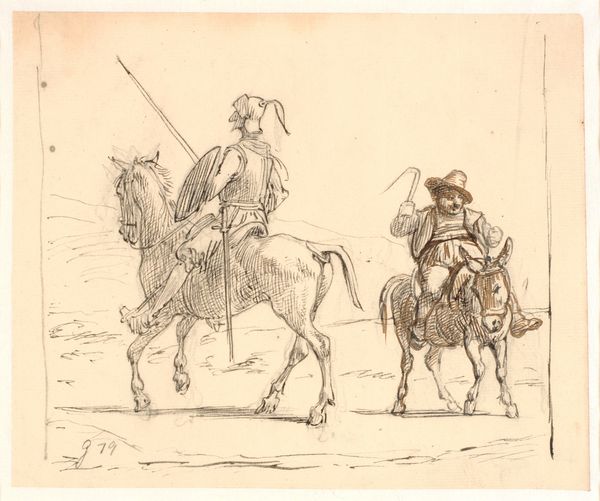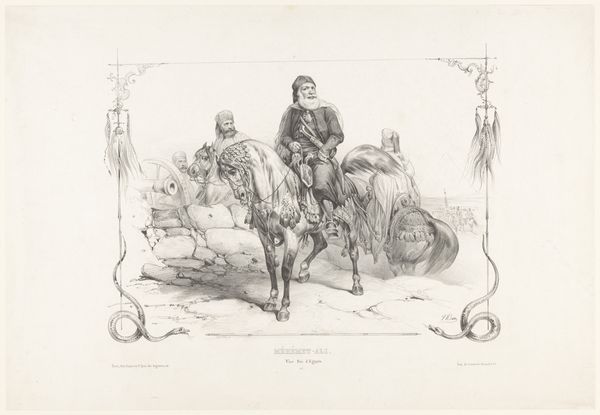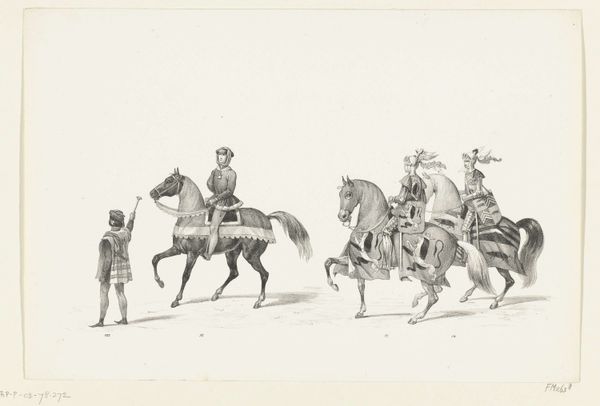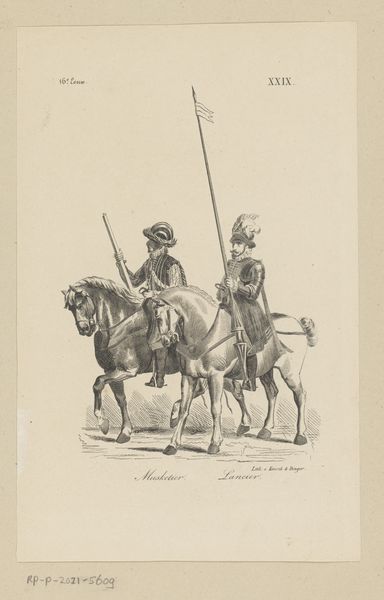
drawing, print, engraving
#
portrait
#
drawing
#
light pencil work
#
medieval
# print
#
figuration
#
costume
#
genre-painting
#
history-painting
#
academic-art
#
engraving
#
realism
Dimensions: height 150 mm, width 235 mm
Copyright: Rijks Museum: Open Domain
Editor: This print, "Two Riders and Commander in Seventeenth Century Clothing", was made in 1857 by an anonymous artist. It’s currently held at the Rijksmuseum. The meticulous lines and shading of the figures, especially the armor, caught my eye. It seems to present a very staged or constructed depiction of history. How do you interpret this work through its visual elements? Curator: What strikes me first is the stark composition itself. Notice how the artist uses line and form to separate the three figures, almost creating distinct vignettes within the same frame. The use of light pencil work, as the metadata suggests, emphasizes contour over volume, contributing to a flatter, more graphic representation of depth. Do you see how this flatness affects your understanding of the work? Editor: I do. It feels less about depicting a real event and more about displaying archetypes or figures from the past, like illustrations in a history book. There’s almost a detachment, enhanced by the crispness of the lines and the controlled shading. It highlights their costumes more than their personalities. Curator: Precisely. This controlled execution underscores a preoccupation with representation over realism, echoing concerns in academic art. Consider the placement of each figure, their posture, the textures of their garments, how it seems intended to catalog these details as opposed to drawing us into a narrative. Is there anything more these purely formal elements may suggest? Editor: Perhaps the rigidity suggests an idealized or sanitized view of history, removing the chaos and uncertainty for a cleaner, more digestible image? Curator: An astute observation. The work uses historical figures not for the sake of historical record, but as tools for an aesthetic exercise that emphasizes visual structure and precise formal arrangements. Editor: It’s fascinating to see how a seemingly straightforward image can reveal so much about the artist's intentions and the art's theoretical framework. Curator: Indeed, focusing on the intrinsic qualities opens avenues for deeper understanding and allows us to move past surface impressions and grasp its core meaning.
Comments
No comments
Be the first to comment and join the conversation on the ultimate creative platform.
